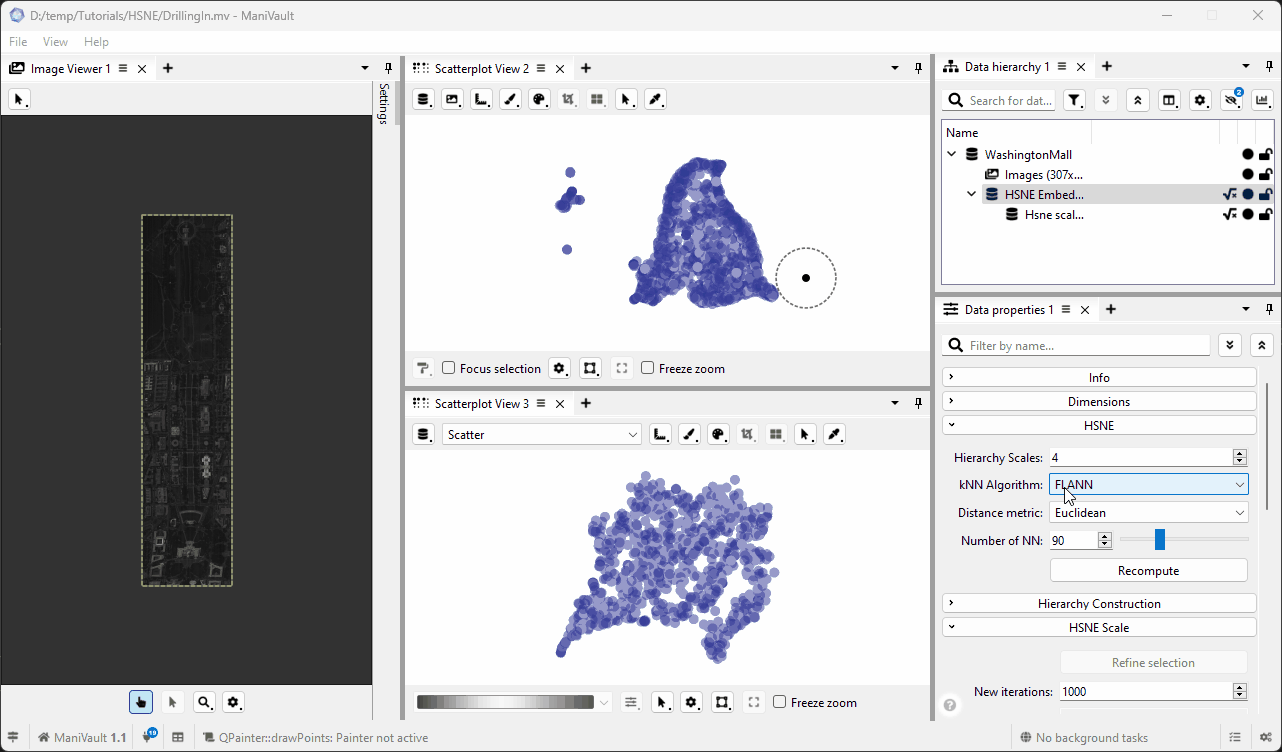Hyperspectral image analysis using HSNE dimensionality reduction
- ManiVault Studio 1.2 or higher
- |
- 16 Dec 2024
- |
- Thomas
- |
- 2 min read
This tutorial will guide you through the basic analysis of hyperspectral (high-dimensional) image data using HSNE dimensionality reduction. We will look at hyperspectral aerial infrared images of washington and try to find some interesting patterns.
This tutorial requires a starter project, download it here if you need it
Explore the data
We start with a basic investigation of the hyper-spectral image data. We create two basic data views to start the visual analytics pipeline:
- An image viewer view to explore the images of the hyperspectral image dataset
- A scatterplot to view the raw data points
Note: the image viewer and the scatterplot viewer share a selection channel which means that selections made in the image viewer are reflected in the scatterplot and vice versa.
This video shows how to create the exploration views
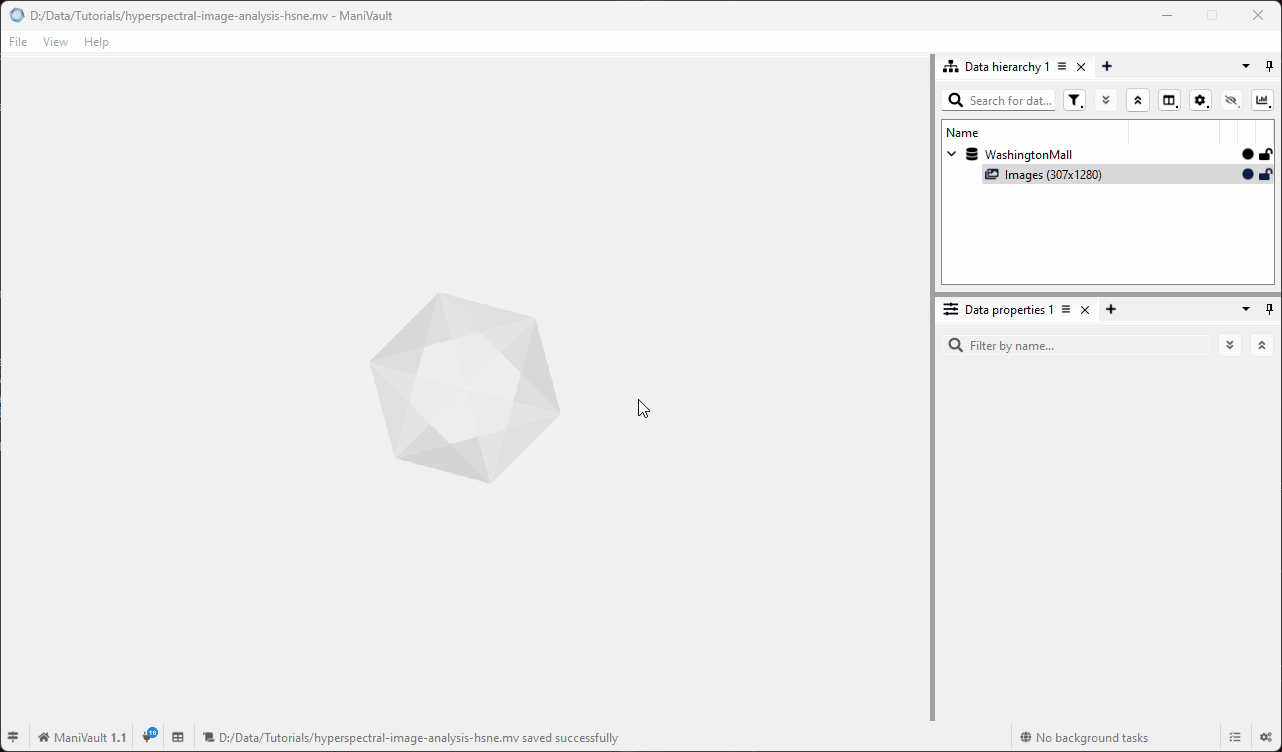
Creating the analysis
Next, we create the HSNE analysis and add an additional scatterplot which will display the top-level embedding. For now, we will use the standard HSNE settings as they are sufficient for this demonstration, more in-depth tutorials will follow.
This video shows how to create the HSNE analysis
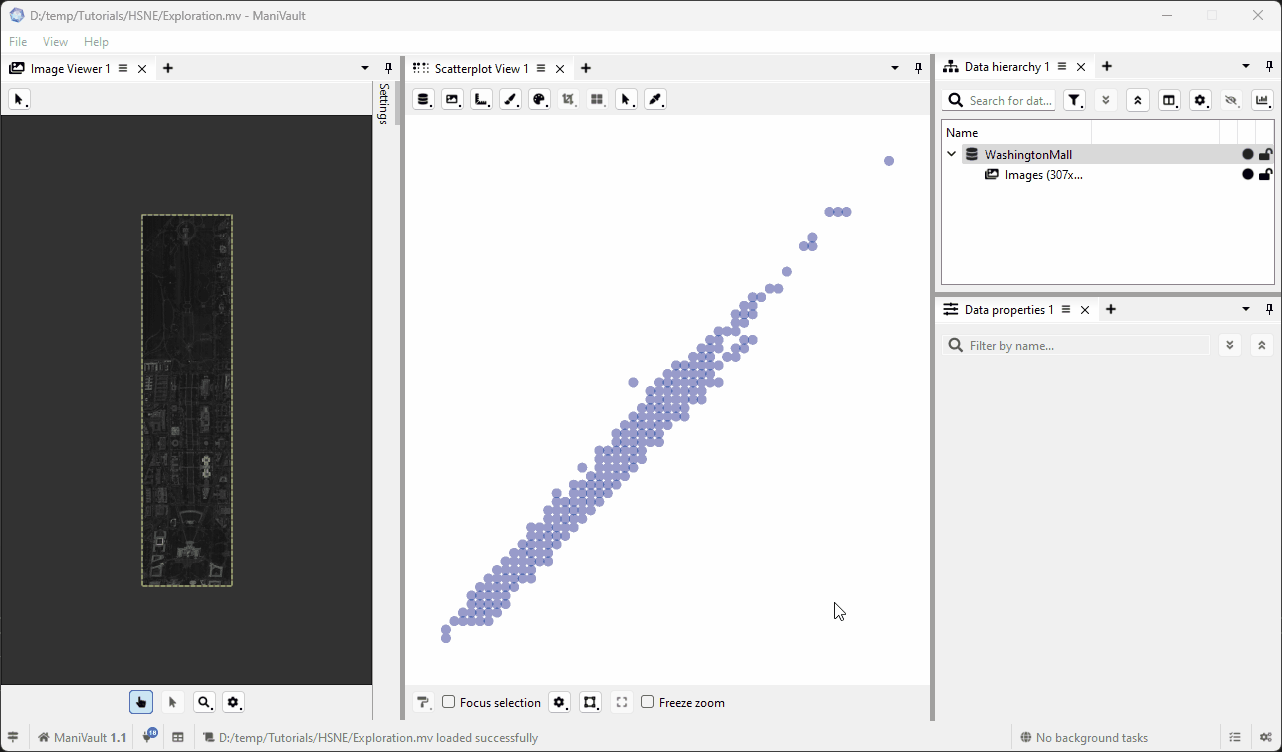
Exploring the top-level embedding
Now that the top-level embedding has been computed, we can do a high-level exloration of the image data. As you can see from the top-level embedding, there are several clusters of landmarks that represent different types of image areas. We identify for instance ponds and shadow areas (well clustered because the image contains 100 bands of infra-red light wavelengths).
This video shows how to explore the top-level embedding
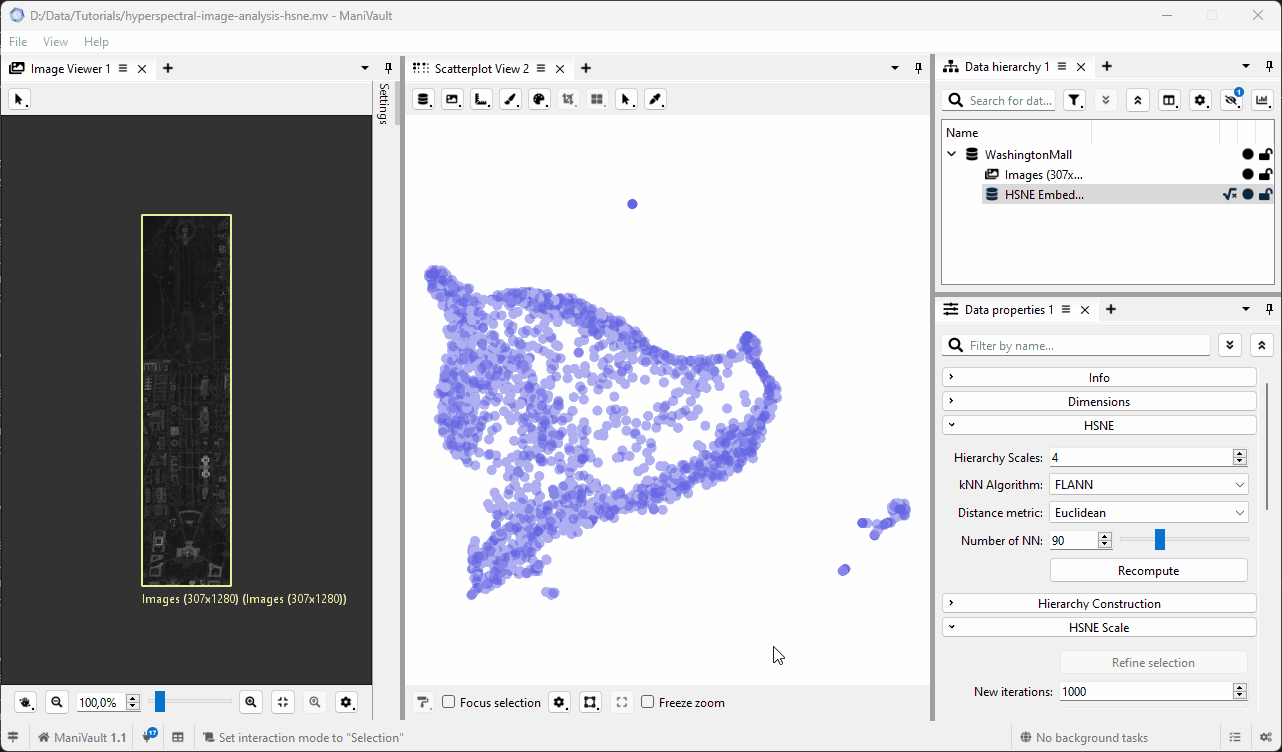
Drilling-in
To refine the top-level embedding, a region of interest is selected and subsequently refined. This refined embedding (aka scale) is displayed in a new scatterplot, revealing patterns at a lower level of abstraction.
This video shows how to drill into an HSNE embedding
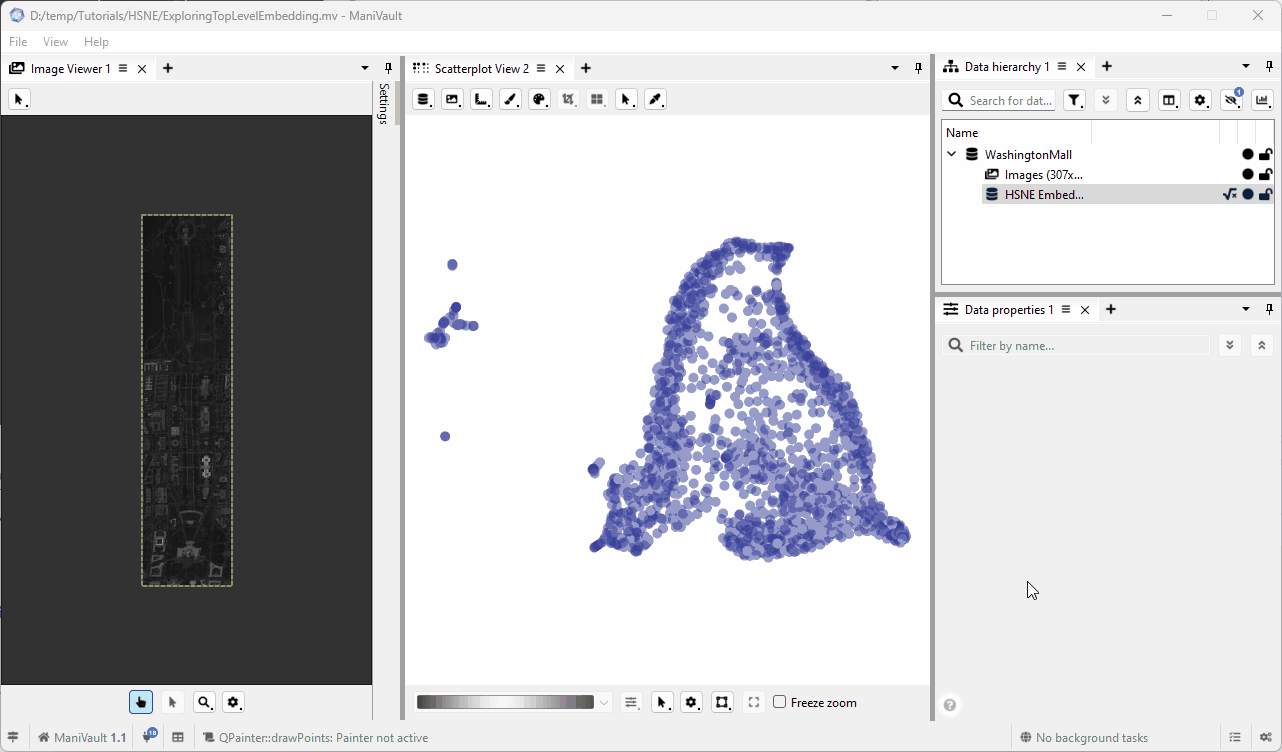
Automatic clustering and re-coloring
Finaly, we automatically establish clusters with the mean-shift clustering analysis. The clusters dataset that it produces is then used in the image viewer to re-color the images with the cluster information.
This video shows how to cluster and recolor
